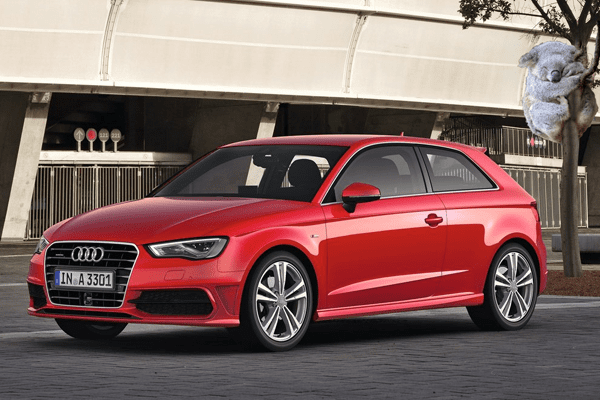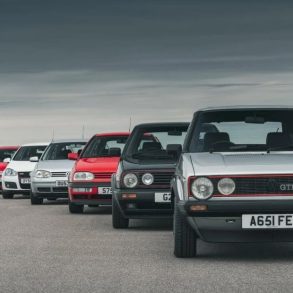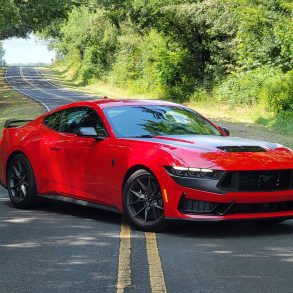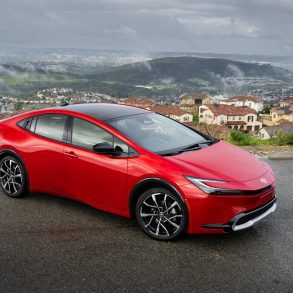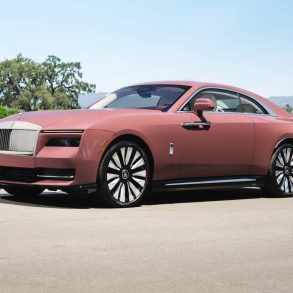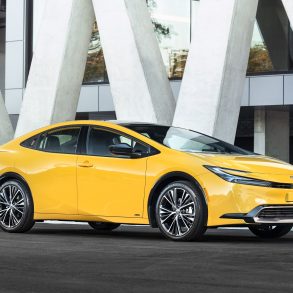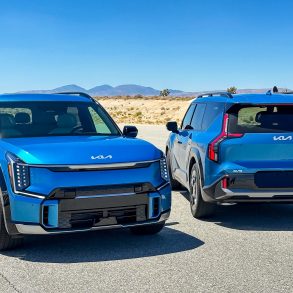 Audi exterior designers are known in the automotive world to be among the laziest in the business, they’re the automotive design equivalent of koalas: sleeping for 18 hours a day until a deadline approaches, at which time they’ll just pull an existing design from the drawer and make a few quick changes and then convince their bosses that evolutionary design keeps the outgoing model from looking old, which should help resale values of the brand. And the amazing thing is that they actually get away with it, because apparently it does seem to work like that, not only in theory.
Audi exterior designers are known in the automotive world to be among the laziest in the business, they’re the automotive design equivalent of koalas: sleeping for 18 hours a day until a deadline approaches, at which time they’ll just pull an existing design from the drawer and make a few quick changes and then convince their bosses that evolutionary design keeps the outgoing model from looking old, which should help resale values of the brand. And the amazing thing is that they actually get away with it, because apparently it does seem to work like that, not only in theory.
And now Volkswagen designers seem to have been contaminated by the same laziness virus, as they’ve first proven with the “eighth” generation Passat, which really should be called the seven-and-a-halfth generation, especially when looking at it from the rear three quarters. Usually, a new model generation would imply that the car is completely redesigned, while a facelift means that the so-called hard points, like the window frames and door pillars stay the same, and only minor changes are made to the headlights and taillights, with subsequently the hood and boot lid, and sometimes even the front wings.
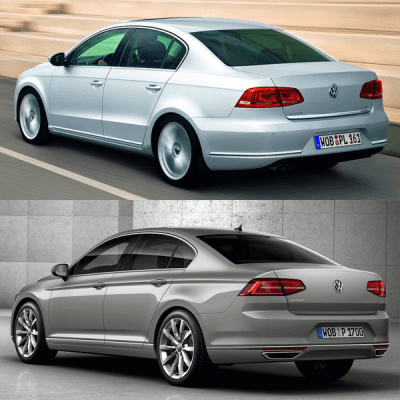 But with the Passat, they couldn’t be bothered to change the C-pillar, or even something simple like the shape of the rear lights or fender, which means it should be classified as only a minor facelift, even if the platform and engines have been completely reworked. The designers must have realized this when they saw the final clay model, and in order to make the world believe they had actually done any work, they sneaked back into the studio the night before the design was frozen and quickly made the belt line a bit more pronounced.
But with the Passat, they couldn’t be bothered to change the C-pillar, or even something simple like the shape of the rear lights or fender, which means it should be classified as only a minor facelift, even if the platform and engines have been completely reworked. The designers must have realized this when they saw the final clay model, and in order to make the world believe they had actually done any work, they sneaked back into the studio the night before the design was frozen and quickly made the belt line a bit more pronounced.
 Now they’ve pulled a similar trick with the new, so-called fourth generation Caddy. The current Caddy has been in production for no less than 11 years, with only a facelift in late 2010. So after 11 years, you’d think the designers would have had enough sleep and be able to come up with something new, right? Wrong. All they’ve done is change the rear hatch and tail lights, and made a few minor changes to the grille, headlights and front fender and welcome, fourth generation……
Now they’ve pulled a similar trick with the new, so-called fourth generation Caddy. The current Caddy has been in production for no less than 11 years, with only a facelift in late 2010. So after 11 years, you’d think the designers would have had enough sleep and be able to come up with something new, right? Wrong. All they’ve done is change the rear hatch and tail lights, and made a few minor changes to the grille, headlights and front fender and welcome, fourth generation……
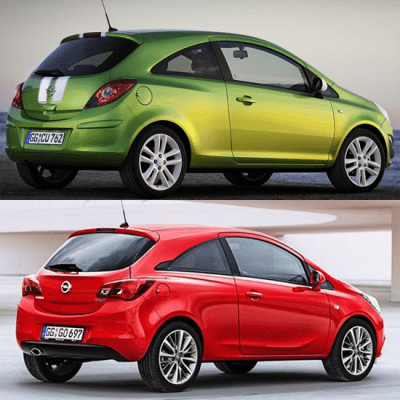 I can understand why Opel /Vauxhall has used a similar strategy with their “new” Corsa; just changing the front end and and tail lights but still calling it a new generation, because General Motors has been on the brink of bankruptcy only a few years ago and its European operations, including Opel and Vauxhall, are still losing money. Since the development of a new car takes a few years, the current Corsa has been given a low-budget makeover in an attempt to stop the sales slide until the all-new model is ready.
I can understand why Opel /Vauxhall has used a similar strategy with their “new” Corsa; just changing the front end and and tail lights but still calling it a new generation, because General Motors has been on the brink of bankruptcy only a few years ago and its European operations, including Opel and Vauxhall, are still losing money. Since the development of a new car takes a few years, the current Corsa has been given a low-budget makeover in an attempt to stop the sales slide until the all-new model is ready.
But Volkswagen isn’t struggling for cash at all. In fact, they’re probably the only automaker actually making a profit in Europe, and thanks to the millions of cars they sell each year in China and their success at making timing chains and DSG transmissions last exactly one day beyond the government mandated warranty period, the VW Group is sitting on a pile of cash that would enable them to fit their cars with timing belts made from remelted coins and clutches made from Euro bills and they’d still be able to buy Sergio Marchionne a private island to hold week-long Bunga Bunga parties, just to convince him to sell them Alfa Romeo. Unfortunately for them, Sergio is only half-Italian and his Canadian other half wouldn’t know what to do at a Bunga Bunga party except to put maple syrup on everything he sees, including the ladies.
Wait, we’re getting to far off my point now. What I’m trying to say here is that Volkswagen isn’t slowly evolving its design just to save money on design and development, but as a strategy to sell more cars. You see, like with art, it takes time to get used to an all-new design and to appreciate the beauty of it. But once people have become familiar with a certain design language, they’ll feel comfortable with it and “trust” it. So by staying very close to the already familiar design and making only minor changes to make it look fresh again, the Passat and Caddy are new enough for first movers to want to have the latest version, while more conservative car buyers will feel comfortable with the familiar appearance of the cars.
 Being able to appeal to both the trend-sensitive and the conservative car buyer, VW broadens its pool of potential customers and is therefore able to sell more cars. Which helps them pile up even more cash so they can step-by-step take over every other automaker until their only competitor will be Alfa Romeo. And then they can stop designing after all and just spend their time having Bunga Bunga parties on their private island.
Being able to appeal to both the trend-sensitive and the conservative car buyer, VW broadens its pool of potential customers and is therefore able to sell more cars. Which helps them pile up even more cash so they can step-by-step take over every other automaker until their only competitor will be Alfa Romeo. And then they can stop designing after all and just spend their time having Bunga Bunga parties on their private island.

